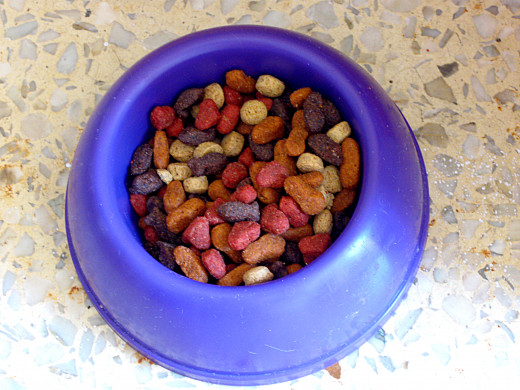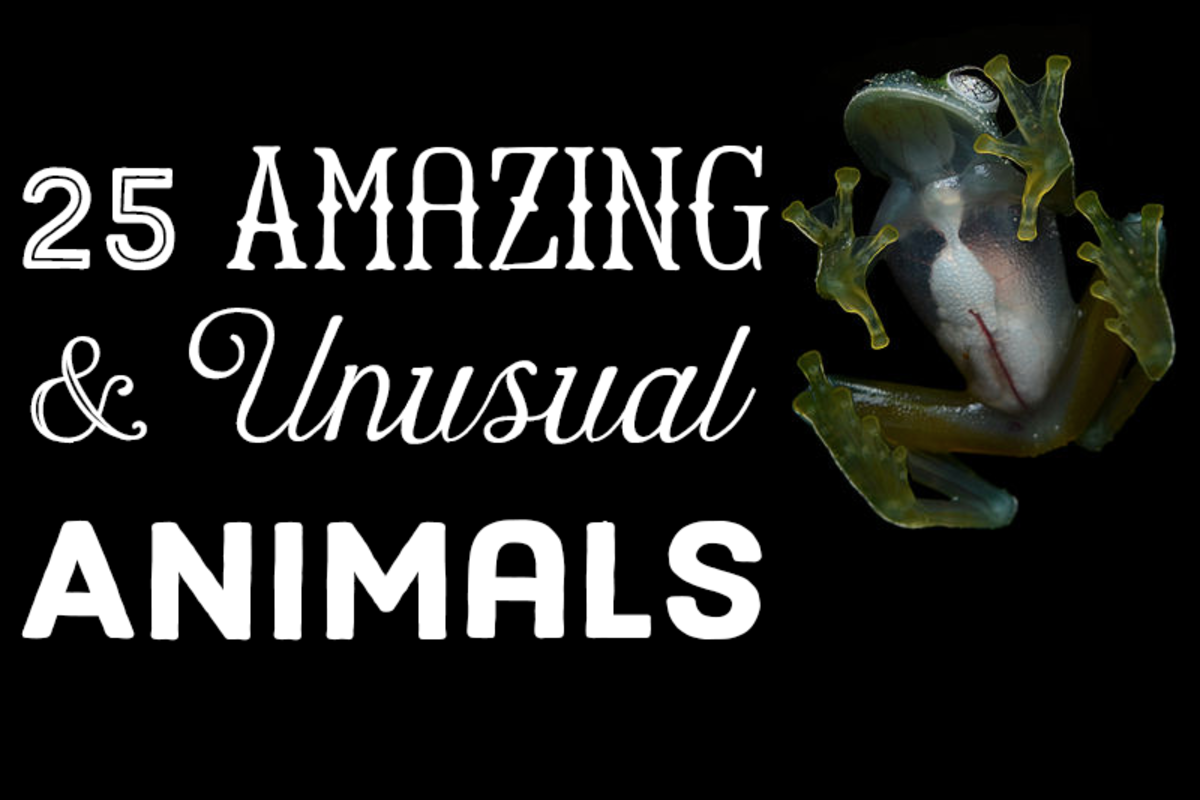Food Safety, Weight Loss Tactics, and First Aid For Your Dog
Fido's Food

Dog Food Safety
Most dog owners make the assumption that there is some government agency out there protecting the quality of the commercial dog food they buy every week for their pet. Nothing could be further from the truth. The many poisonous dog food scares which have occurred over the past few years involving dog food from China should have already destroyed this myth. Dog food production is even less controlled than human food and even human food production is not very well protected. Government, in almost any area, is very ineffective at stopping potential risks in advance. This is particularly true when it comes to dog food. Therefore, you must watch out for your dog yourself.
Nearly every dog food manufacturer uses ingredients which are obtained from outside sources and which they have little control over. In addition, harsh processing methods often further destroy some nutrients, leaving harmful imbalances of other nutrients which are less susceptible to the heat.
If you feed your dog commercially produced dog food, neither the manufacturer nor you can absolutely identify what chemicals and levels of nutrients your dog is receiving. In fact, the amounts may differ with every bag of dog food you buy! At best, someone took a representative sampling from one production batch and then developed the nutrition label from there. This is no guarantee at all that a bag of dog food you purchase at the grocery is the same as the sample batch.
If you feed your dog the same brand of dog food every day, there is a strong chance that it may be ingesting too many chemicals and too few nutrients. This is the case even if you are using premium brands of dog food! The accumulation of these chemicals may be doing serious harm to the health of your pet. Your pet may also be receiving too much or too little of many vital nutrients.
If you must continue to use commercially produced dog food, it might be a good idea to start alternating brands in order to avoid these difficulties. Although this is nowhere close to a complete solution, feeding your dog a variety of foods at least gives your dog a fighting chance against the chemical barrage.
Another much better solution may be to start making your dog food at home. This is not as difficult, time consuming or expensive as most people assume it would be. In fact, making your own dog food can actually be less expensive than many premium brands of dog food which would be inferior to the dog food you produce yourself. However, if you decide to start cooking your dog's food at home, it is extremely important that you complete the necessary research to make sure you are giving your dog complete balanced nutrition. Do a little research online and you can find recipes (for free or for little cost) which are designed to help you accomplish that easily. If you take this route, your dog will definitely appreciate your effort. In the end you may find that this route is best for both your dog and you.
Does your dog get his/her daily exercise by running or walking outdoors with you?

Weight Loss Tactics
Just as it does for humans, being overweight can cause a variety of health problems for a dog. In fact, because dogs have faster metabolisms and shorter life spans, fat can cause those problems more quickly and those problems can be more severe. Unfortunately, your dog is not capable of solving this problem on its own. Dogs are genetically programmed to eat whenever any food is available sot that they can compensate for the times when no food is available. The fault for a dog being overweight falls squarely on its owner’s shoulders.
Most dog owners fail to account for a dog's small size when feeding and assume that just because a dog seems hungry, it must need more food. As a result, dog owners typically over feed their dogs by 25% or more! Usually dog over feeding consists of table scraps slipped to the dog as treats. The fact is that this small portion of table scraps often contains as many calories as the dog needs to have in a day. Extra calories will build up as fat on a dog just as quickly as they will a human. Sometimes even the dog manufacturers' recommended amounts are too much if your dog does not get sufficient exercise.
Just checking the breed and weight of your dog against a chart is not the best way to determine if your dog is too fat. You should check your dog at the base of the tail, spine and shoulders, the ribs, the abdomen and the waist to see if there is extra fat there. Most "weight loss" dog foods have an appearance chart to compare your dog too as well. Veterinarians use a scale of 1 to 9 to describe a dog's weight with 1 being emaciated to 9 representing extremely fat.
It is a dog owner's duty to help their pet achieve a healthy weight. This will involve both restricting calories and increased exercise. Increased exercise will have to include more than just walking or running with the owner unless the owner is a marathon runner. Even the most out of shape dog is usually in better condition than its owner.
Calorie restriction is now fairly easy to accomplish with the advent of specially designed balanced weight loss types of dog food. This can help prevent the dog from feeling deprived while at the same time cutting the dog's calories enough to achieve weight loss. Your dog should be able to lose .5% to 2% of its bodyweight per week without negative consequences. Weight loss dog food formulas make it easy to be sure your dog is receiving ample supplies of vitamins and minerals. Your dog needs fewer calories, not less nutrition.
Most important of all, every member of the household has to be willing to participate in your dog's weight loss program. No slipping table scraps to the dog when no one is looking. Keep in mind that your dog's health is at stake. If you feel that your dog's obesity has already affected your dog's health, a visit to the veterinarian is highly recommended.
Putting Together a Pet First Aid Kit

Preparing for Dog Emergencies
Every dog owner must be prepared for emergency situations. Every dog owner loves their dog. Many would essentially have a nervous breakdown if any harm should befall their dog. Unfortunately, part of the tremendous love owners feel for their dogs involves seriously overestimating the dog's ability to understand the risks around it and avoid injury. Even more troublesome, most dog owners would have no clue what to do if their dog becomes injured.
The first step an owner should take to prepare to provide first aid for their dog is to put together a first aid kit and keep it somewhere handy. Among other items this first aid kit should include day and night contact numbers for the dog's veterinarian, directions to the veterinarian's office and the number for the local poison control center. Locating these numbers quickly in the event of an emergency could save your dog's life.
Other items which should be included in the first aid kit mirror much of the contents of a normal kit for humans such as bandages and gauze of different sizes, scissors, tweezers, cotton balls, cotton swabs, a rectal thermometer, and disposable gloves. For dogs, it helps to have a thick towel handy in case you need a stretcher. You should also include a rehydrator such as Pedialyte and a dense high calorie supplement designed for dogs. Medicines you should have available include diphenhydramine hydrochloride (An allergy medicine safe for use in dogs. You should clear the proper dosage with your veterinarian ahead of time), antibiotic ointment, eye and ear wash, sterile saline, hydrogen peroxide, cortisone spray and activated charcoal. Having the tools you need handy can make the difference between an emergency and a tragedy.
Some of the most common pet injuries involve insect bites - Stings from bees, hornets, yellow jackets or fire ants. Dogs can not tell us how badly a bite may be bothering them so we have to be vigilant when the dog has been anywhere a bite might have occurred. A reaction to a sting normally happens within 20 minutes. Any dog that has a strong reaction to a sting should be monitored closely for the next 24 hours. There is a danger of anaphylactic shock.
If you notice your pet start scratching excessively, or biting at a particular area you should check for an insect sting. You should give the dog first aid as soon as possible. Find the location of the sting and attempt to locate the stinger. Insect stingers often break off and remain attached to the victim. Pulling these stingers out with tweezers often causes more venom to inject into the sting so you should gently scrape with a credit card, driver's license or some similar piece of plastic to dislodge the stinger. A paste of baking soda and water can be applied for quick relief. If that does not work, diphenhydramine may need to be administered in the proper dose.
Another major source of pet injury is chocolate poisoning. Dogs love getting into chocolate, yet a dose as small as 1 oz. of milk chocolate or .1 oz of baker's chocolate per pound of bodyweight could easily be toxic. At the least, lower doses can cause difficulty breathing, irregular heartbeat, vomiting, diarrhea and increased body temperature. If you suspect that your pet has ingested a large quantity of chocolate, you should induce vomiting by administering 2 teaspoons of hydrogen peroxide with a syringe and get the dog to the veterinarian as soon as possible.
These are just a couple of potential dog emergencies in which preparation can make the difference between recovery and death. Knowing the right action to take in case of an injury to your dog can save you a world of unnecessary grief. Talk with your veterinarian and make sure you are prepared before the danger presents itself.



